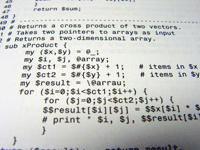In this chapter we focus on the Simple API for XML (SAX), an
event-driven, serial-access mechanism for accessing XML documents. This
protocol is frequently used by servlets and network-oriented programs
that need to transmit and receive XML documents, because it's the
fastest and least memory-intensive mechanism that is currently
available for dealing with XML documents, other than StAX.
Note: In a nutshell, SAX is oriented towards state independent
processing, where the handling of an element does not depend on the
elements that came before. StAX, on the other hand, is oriented towards
state dependent processing. For a more detailed comparison, see SAX and StAX in Basic Standards and When to Use SAX.
Setting up a program to use SAX requires a bit more work than setting
up to use the Document Object Model (DOM). SAX is an event-driven model
(you provide the callback methods, and the parser invokes them as it
reads the XML data), and that makes it harder to visualize. Finally,
you can't "back up" to an earlier part of the document, or rearrange
it, any more than you can back up a serial data stream or rearrange
characters you have read from that stream.
For those reasons, developers
who are writing a user-oriented application that displays an XML
document and possibly modifies it will want to use the DOM mechanism
described in Chapter 6.
However, even if you plan to build DOM applications exclusively, there
are several important reasons for familiarizing yourself with the SAX
model:
- Same Error Handling: The same kinds of exceptions are generated by the SAX and DOM APIs, so the error handling code is virtually identical.
- Handling Validation Errors:
By default, the specifications require that validation errors (which
you'll learn more about in this part of the tutorial) are ignored. If
you want to throw an exception in the event of a validation error (and
you probably do), then you need to understand how SAX error handling
works.
- Converting Existing Data: As you'll see in Chapter 6,
there is a mechanism you can use to convert an existing data set to
XML. However, taking advantage of that mechanism requires an
understanding of the SAX model.
|


